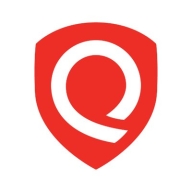

Qualys VMDR and Red Hat Advanced Cluster Security for Kubernetes compete in the cybersecurity solutions category. Red Hat appears to have an upper hand here as it excels in securing containerized environments and providing seamless integration, crucial for modern cloud applications.
Features: Qualys VMDR is recognized for its advanced vulnerability management, continuous monitoring capabilities, and comprehensive patch management. Its detailed reporting tools are also valued. Red Hat Advanced Cluster Security offers strong visibility into containerized environments, seamless API integration, and robust network security for OpenShift deployments, enhancing its attractiveness for container-focused security.
Room for Improvement: Qualys VMDR has areas needing enhancement, notably in asset tagging and ServiceNow integration. Users also seek more intuitive reporting and reduced complexity. Red Hat Advanced Cluster Security could benefit from better documentation and API integration. Users are also looking for improved command line interfaces and more comprehensive zero-trust controls.
Ease of Deployment and Customer Service: Qualys VMDR is flexible, supporting deployment across private, public, and hybrid clouds, though customer support experiences vary. On the other hand, Red Hat Advanced Cluster Security is often deployed in on-premises and hybrid cloud setups and is praised for responsive and effective customer service.
Pricing and ROI: Qualys VMDR is perceived as expensive but offers significant ROI through reduced cybersecurity risk. Pricing negotiations can lead to discounts. Red Hat Advanced Cluster Security, while also costly, is competitive, especially when bundled with OpenShift, providing notable ROI by reducing business risks and enhancing security management.
| Product | Market Share (%) |
|---|---|
| Qualys VMDR | 2.4% |
| Red Hat Advanced Cluster Security for Kubernetes | 2.1% |
| Other | 95.5% |


| Company Size | Count |
|---|---|
| Small Business | 20 |
| Midsize Enterprise | 12 |
| Large Enterprise | 69 |
| Company Size | Count |
|---|---|
| Small Business | 6 |
| Midsize Enterprise | 2 |
| Large Enterprise | 4 |
Vulnerability Management, Detection, and Response (VMDR) is a cornerstone product of the Qualys TruRisk Platform and a global leader in the enterprise-grade vulnerability management (VM) vendor space. With VMDR, enterprises are empowered with visibility and insight into cyber risk exposure - making it easy to prioritize vulnerabilities, assets, or groups of assets based on business risk. Security teams can take action to mitigate risk, helping the business measure their actual risk exposure over time.
Qualys VMDR offers an all-inclusive risk-based vulnerability management solution to prioritize vulnerabilities and assets based on risk and business criticality. VMDR seamlessly integrates with configuration management databases (CMDB), Qualys Patch Management, Custom Assessment and Remediation (CAR), Qualys TotalCloud and other Qualys and non-Qualys solutions to facilitate vulnerability detection and remediation across the entire enterprise.
With VMDR, users are empowered with actionable risk insights that translate vulnerabilities and exploits into optimized remediation actions based on business impact. Qualys customers can now aggregate and orchestrate data from the Qualys Threat Library, 25+ threat intelligence feeds, and third-party security and IT solutions, empowering organizations to measure, communicate, and eliminate risk across on-premises, hybrid, and cloud environments.
Red Hat Advanced Cluster Security for Kubernetes is a Kubernetes-native container security solution that enables your organization to more securely build, deploy, and run cloud-native applications from anywhere. With its built-in security across the entire software development life cycle, you can lower your operational costs, reduce operational risk, and increase developer productivity while improving your security posture immediately. In addition, Red Hat Advanced Cluster Security integrates with security tools and DevOps in an effort to help you mitigate threats and enforce security policies that minimize operational risk to your applications. It also enables you to provide developers with actionable, context-rich guidelines integrated into existing workflows, along with tooling to support developer productivity. The solution is suitable for small, medium, and large-sized companies.
Red Hat Advanced Cluster Security for Kubernetes Features
Red Hat Advanced Cluster Security for Kubernetes has many valuable key features. Some of the most useful ones include:
Red Hat Advanced Cluster Security for Kubernetes Benefits
There are many benefits to implementing Red Hat Advanced Cluster Security for Kubernetes. Some of the biggest advantages the solution offers include:
Reviews from Real Users
PeerSpot user Igor K., Owner/Full Stack Software Engineer at Maraphonic, Inc., says, “The solution allows teams to create their own virtual spaces and share resources. The most valuable feature is the ability to share resources.”
We monitor all Container Security reviews to prevent fraudulent reviews and keep review quality high. We do not post reviews by company employees or direct competitors. We validate each review for authenticity via cross-reference with LinkedIn, and personal follow-up with the reviewer when necessary.